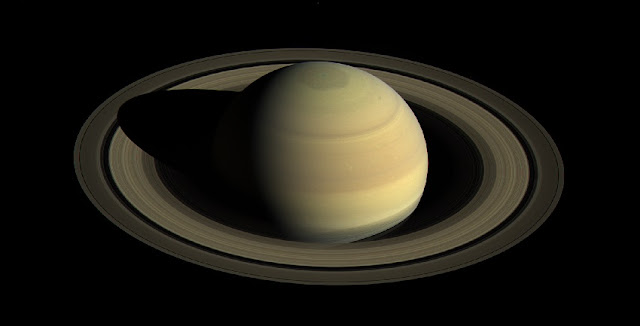Saturn Continues to Mystify Astronomers
There are many indications that our solar system is far younger than those who believe in cosmic evolution are willing to admit. Saturn has received a great deal of scrutiny with the planet itself, its rings, and moons that testify of recent creation and baffling proponents of deep time. Other mysteries have arisen, including Saturn's rotation rate.
The outer planets are gas giants, so determining their rotation rates is rather difficult. Spots and things can move at their own accord and different speeds based on latitude, so those don't help that much. Different methods have been used including examination of its magnetic field, but that has actually changed. The different rotation rates may be another indication that Saturn's age is far less than the expected millions of years.
 |
| Credit: NASA/JPL-Caltech/Space Science Institute (usage does not imply endorsement of site contents) |
A recent news story reported on the latest measurement of Saturn’s rotation rate–10h 33m 38s, plus or minus a minute or two. This is significantly shorter than what is found in most astronomy textbooks. You may think: How could it be difficult to measure a planet’s rotation rate? All you have to do is look for features on a planet’s surface and time how long it takes for them to go around. That is the sort of technique used to measure the rotation rate of a planet with a visible solid surface, such as Mars. But many of the planets don’t have a visible solid surface. For instance, Venus is perpetually surrounded by thick clouds that block our view of its surface. However, radar can easily penetrate those clouds to bounce off Venus’s solid surface, so we’ve known the rotation rate of Venus for a half century.To finish reading, spin on over to "Saturn’s Mysterious Rotation Rate". You may also like to read some other new material, "Saturn’s Rings Not Just Young, but 'Very Young'" and "Saturn's Ring Rain Rates Run Fast".